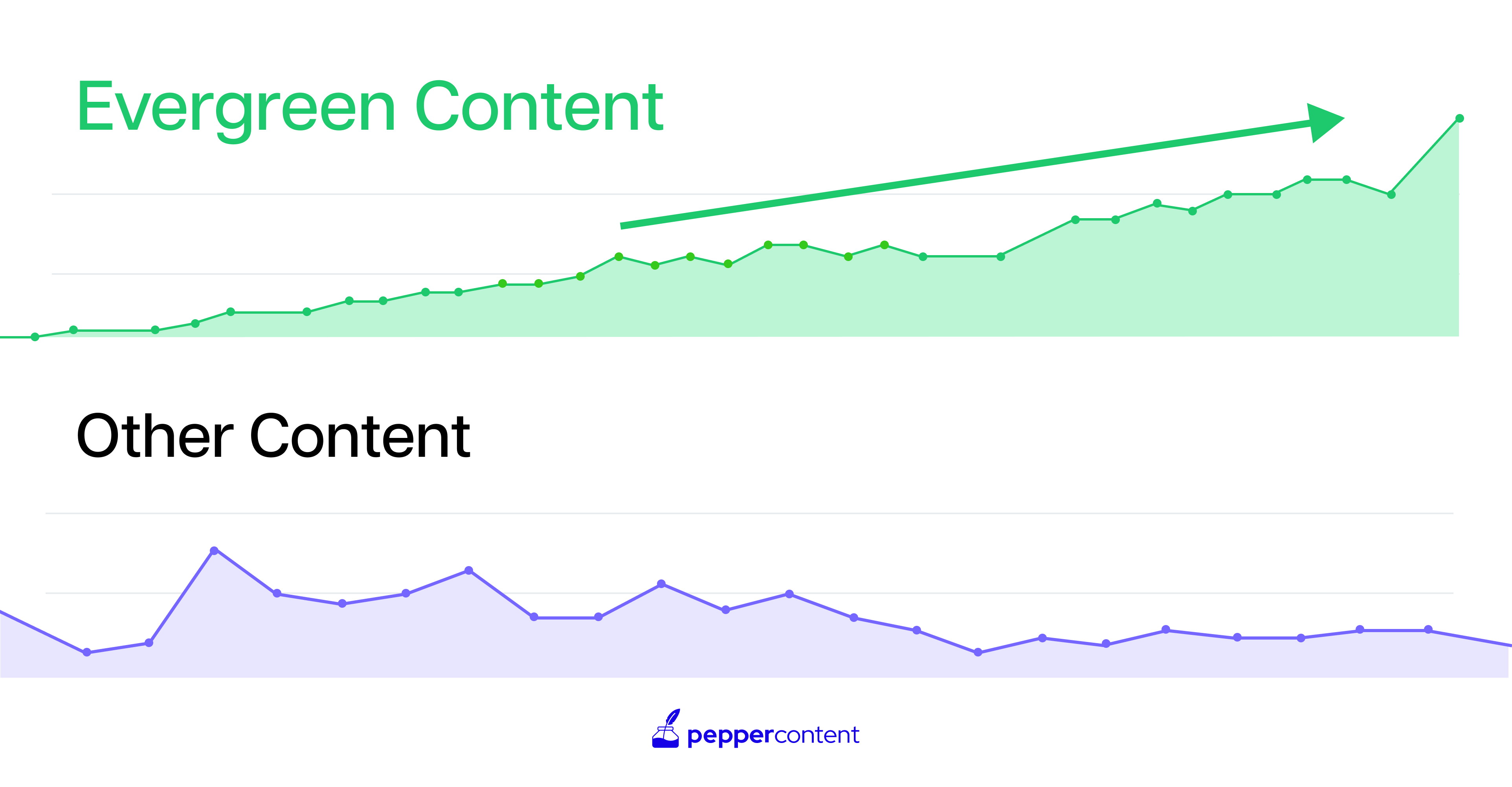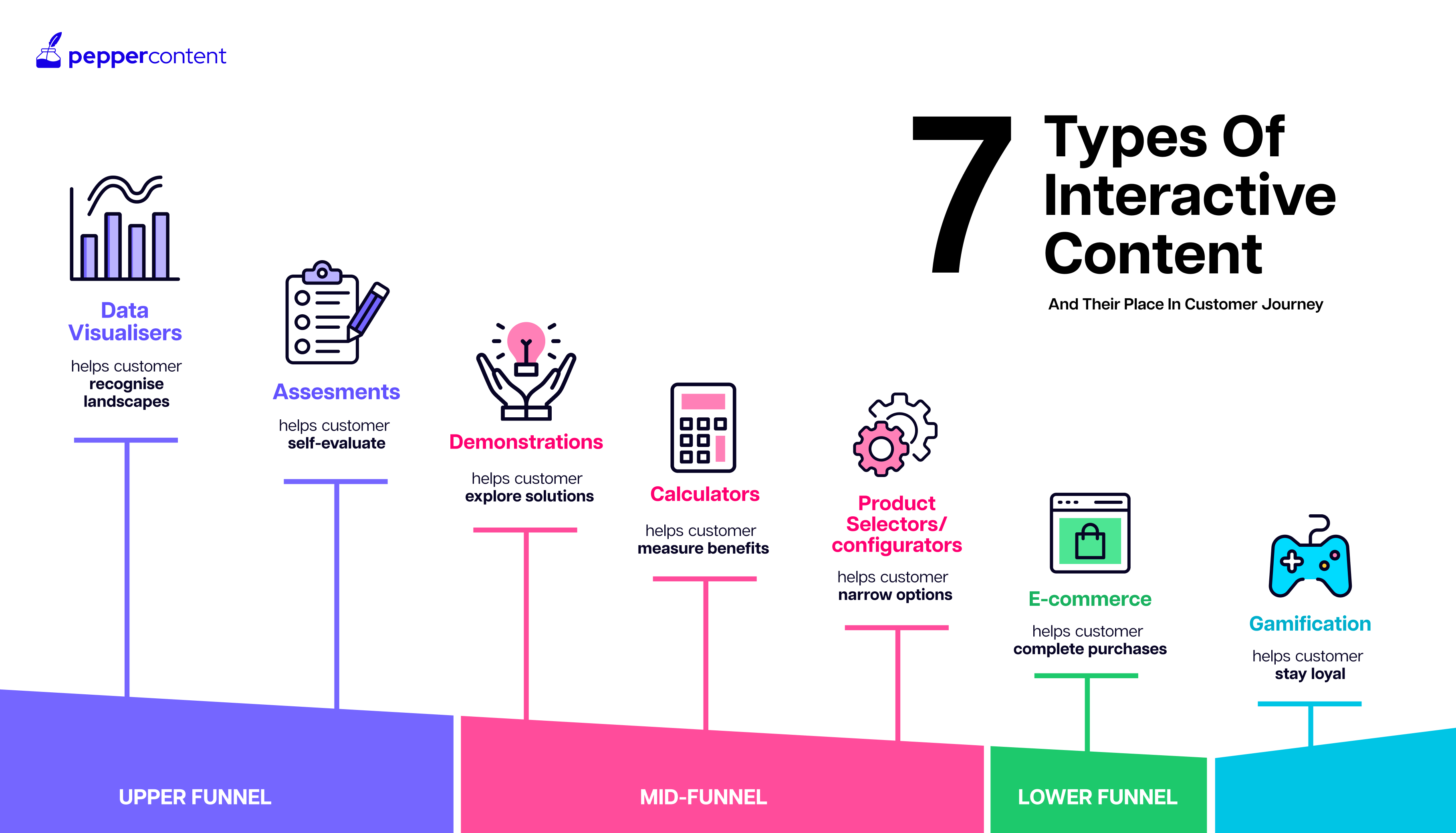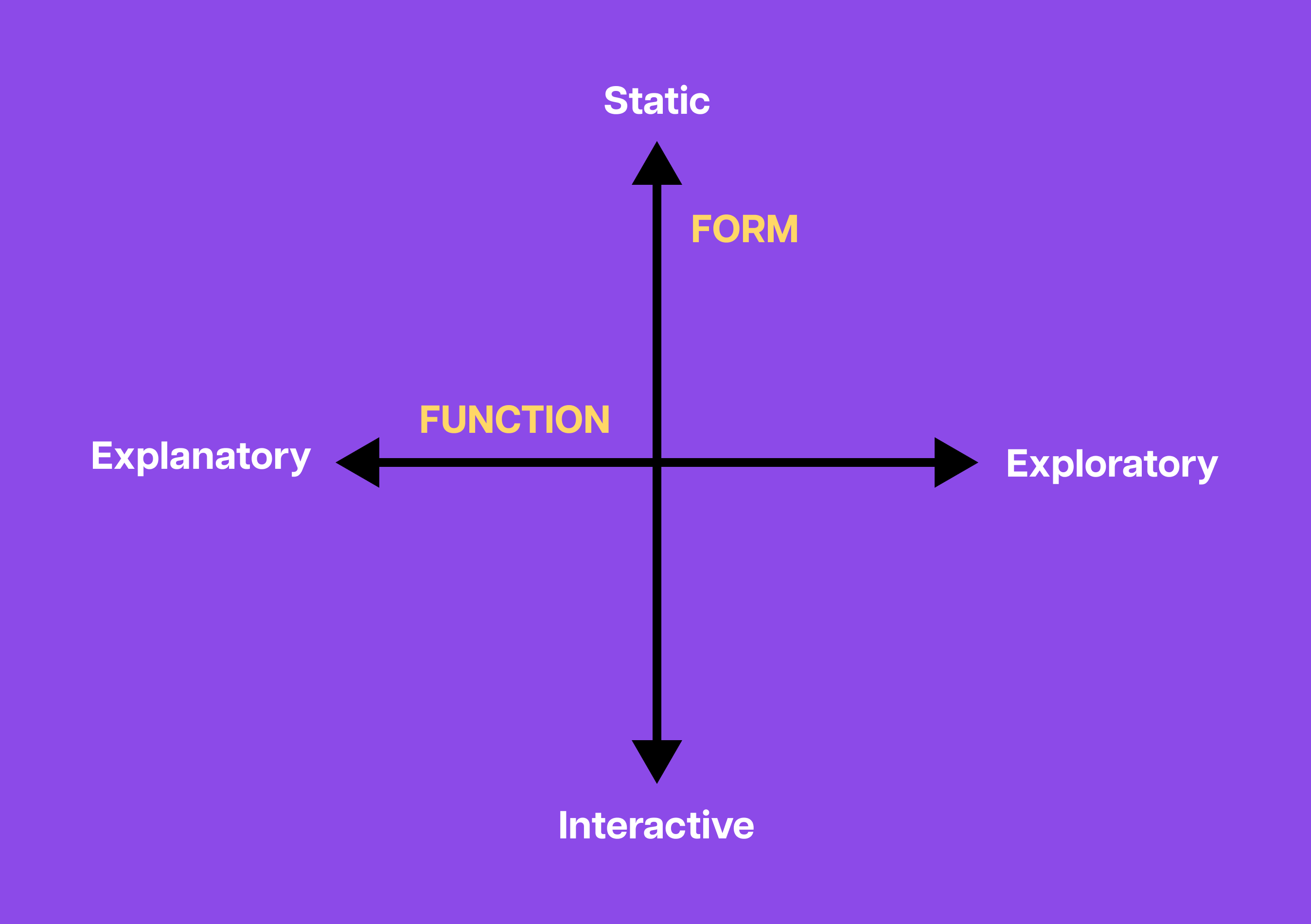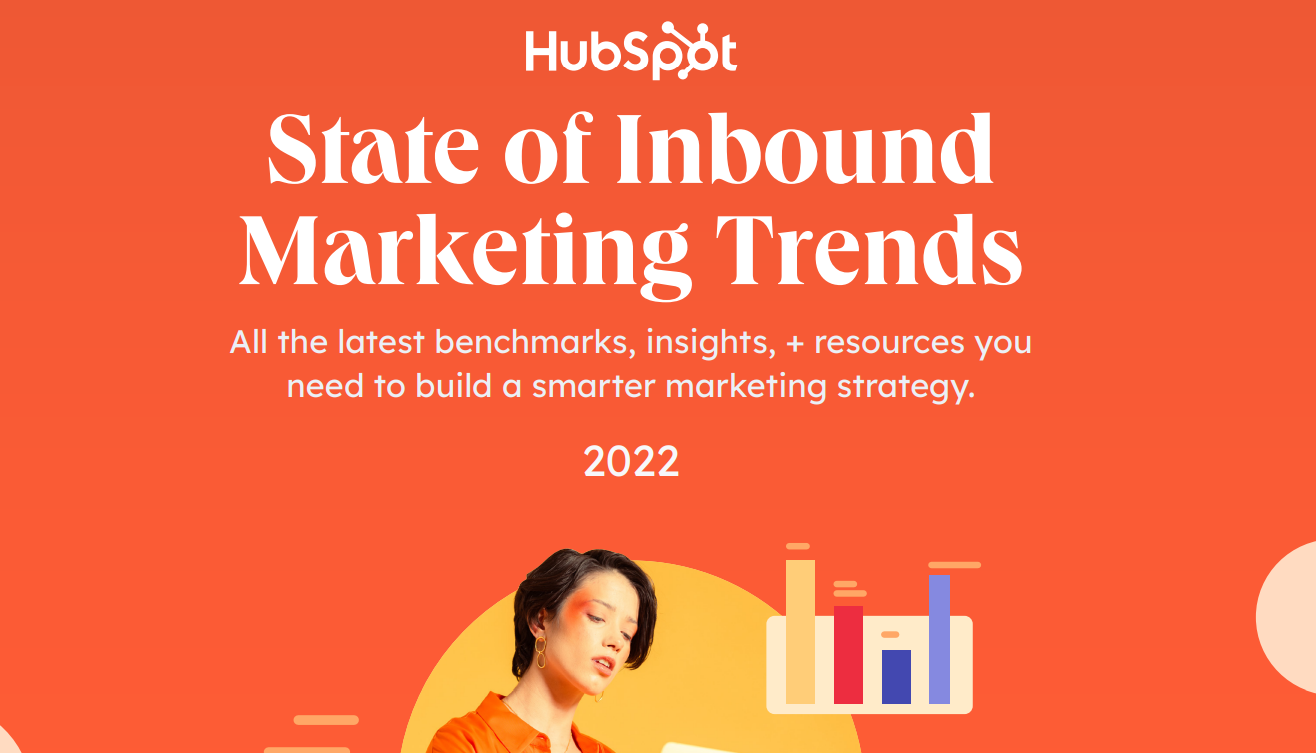Interactive Content vs. Static Content: Which is More Effective?

We’ve all been in that spot. When putting together a new marketing strategy, we often find ourselves struggling with a question: Should we stick with static content or go for interactive content? Which one will get more people interested? Which one will make us stand out?
The Content Marketing Institute (CMI) found that 55% of marketers use interactive content in their marketing campaigns. But does that mean we should ditch static content?
Online content has changed significantly, from basic text-based articles such as blogs to cool interactive multimedia experiences such as quizzes or polls. This change happened because of the rise of new technologies, the changing needs of consumers, and the increasing competitiveness of the marketing landscape.
One of the most significant trends in content is the transition from text to videos. Videos are highly engaging and informative mediums that can be used to tell stories, demonstrate products, and provide educational information. That’s why they’re a big part of lots of marketing plans.
Another change is the rise of interactive content. Interactive content formats like quizzes, polls, and games allow consumers to engage with content more actively. This can help to increase engagement and retention rates, and it can also provide valuable data about consumer preferences.
Both regular and interactive content are used to raise awareness, find more potential customers, and grab the attention of the customers we’re trying to reach. But is one format more effective than the other?
We’ll dive deeper into the interactive content vs. static content comparison and break down both approaches on various parameters like customer engagement, SEO, and conversion rates — and leave it upon yourselves to decide which is more effective for your brand.
Background of Static Content
Static content refers to web pages with fixed content that remains unchanged until manually updated. Typically, users don’t directly interact with this type of content or modify it in any form. Static content includes visual or text content that entertains, informs, or encourages action from readers without requesting an action from end users.
In the early days of the internet, static websites were predominant due to their simplicity and ease of hosting. Even as dynamic content and interactive web applications have gained popularity, static content remains a fundamental aspect of web architecture, serving specific purposes in the digital landscape.
A few examples of static content include:
-
Landing page content
-
Videos
-
Emails
-
Blog posts
-
Ebooks
-
Whitepapers
-
Images
-
Infographics
-
Slideshows and presentations
Benefits of Static Content
Let’s take a look at some of the benefits of including static content in your marketing strategy.
1. Easier to Rank
Static content tends to be more search engine-friendly. Search engines, like Google, can easily crawl and index static pages, leading to better visibility in search results. The straightforward HTML structure of static pages makes it simpler for search engine algorithms to interpret and rank the content accurately.
Static pages often load faster, positively contributing to search engine ranking factors. For example, Google’s PageSpeed Insights tool emphasizes the importance of fast-loading pages for better user experience and search rankings.
2. Static Content is Evergreen in Nature
Static content is often evergreen, providing information that remains relevant over extended periods. This characteristic makes static content an excellent choice for topics that don’t require frequent updates, such as historical information, foundational concepts, or reference materials.
Analyzing user behavior on static versus dynamic content, studies show that evergreen content attracts consistent traffic over time, contributing to a website’s overall authority and credibility.
Ty Heath, the Director of Market Engagement at LinkedIn’s B2B Institute, says:
“Most of your growth potential lies in reaching people who won’t buy from you today but who will buy from you in the future.“

For example, BuzzSumo states that evergreen content is 3x more likely to be shared than non-evergreen content. A DemandGen report cited by HubSpot confirms that evergreen content generates 9x more leads than non-evergreen content.
3. Easy to Produce and Scale
Creating static content is typically easier than developing dynamic content or interactive features. Static pages can be easily replicated and scaled, making it efficient for websites with large amounts of similar content.
These features not only accelerate the content creation process but also allow the management of large-scale websites, ensuring a consistent and efficient user experience across various pages and sections.
Limitations of Static Content
Now, let’s take a look at some of the weaknesses of static content.
1. Limited User Engagement
Interactive and static content can both be engaging to users, but static content inarguably results in less user engagement.
Static content often lacks the interactive elements that can engage users effectively. Without features like comments, real-time updates, or personalized experiences, static pages may struggle to keep users on the site for extended periods.
User engagement metrics, such as time spent on the page and bounce rates, show that static pages generally have lower engagement compared to dynamic pages with interactive elements.
2. High Competition for Organic Search Ranking
While static pages are easier to rank due to their SEO-friendly nature, the simplicity of the content structure also means that competition for top search rankings is high.
As more websites optimize for search engines, the advantages of static content in terms of ranking become less pronounced. Search engine result page (SERP) analysis indicates that certain competitive niches experience saturation in terms of static content, making it challenging for individual pages to stand out.
Background of Interactive Content
Interactive content is dynamic and engaging and is an integral part of marketing strategies, offering a spectrum of advantages to businesses. Not only is interactive content fun for users to interact with, but recent studies also indicate that interactive content can generate 2x more conversions and 4-5x more page views compared to static content.
A few examples of interactive content include:
-
eBooks
-
Virtual Reality (VR)
-
Videos
-
Simple calculators
-
Interactive quizzes
-
Infographics
-
a assessments
-
Augmented Reality (AR) overlays
-
Polls and interactive surveys
-
Personality tests and assessment quizzes

Visual content, such as online quizzes featuring images or GIFs, is 40 times more likely to be shared on social media platforms. The consensus among marketers is clear, with 87% confirming that interactive content excels in capturing and maintaining engagement than static content. Furthermore, 93% of marketers reported the effectiveness of interactive content in educating buyers, emphasizing its role in conveying information.
Interactive content, particularly quizzes, shines brightly when strategically positioned in the buyer’s journey. A substantial 69% of marketers agree that quizzes are most effective during the early stages of the buyer’s journey, driving brand awareness and discovery.
These statistics highlight the potential for interactive content not only to interest audiences but also to achieve high levels of engagement in the digital landscape.
Benefits of Interactive Content
Interactive content is a versatile and powerful tool that can help businesses to achieve a variety of goals, such as:
1. High User Engagement
Interactive content excels in capturing and maintaining user attention. Content types such as quizzes, polls, and interactive infographics stimulate active participation, leading to prolonged user interactions.
As mentioned before, studies consistently reveal that interactive content significantly outperforms static content formats. Moreover, users tend to spend more time engaging with interactive content, fostering a deeper connection with the content.
2. Personalized User Experiences
Interactive content enables a personalized journey for users, allowing them to tailor their experience based on preferences, choices, or responses to interactive elements. This is especially true for user-generated content, which enables brands to offer personalized recommendations and suggestions based on each user’s preferences.
Personalization metrics highlight the positive impact of interactive content on user satisfaction.
3. Potential for Virality
Shareability is a key strength of interactive content. Users are more likely to share content that they find engaging and personally relevant, potentially leading to virality through social media and other online channels.
By optimizing your content for engagement, shareability, and conversion, you can maximize the impact of your content and achieve better results for your business.
Limitations of Interactive Content
Now, let’s take a look at some of the weaknesses of interactive content.
1. Complexity in Creation and Maintenance
Developing interactive content often demands specialized skills and tools. The complexity of designing and implementing interactive features can pose challenges for content creators, requiring a higher level of technical proficiency.
According to the insights shared by Asa Hochhauser and Audrey Ross, a strategic approach to interactive content creation involves repurposing valuable assets into more compelling formats. You can transform existing high-value content into formats that resonate more effectively with the audience. Moreover, you can leverage interactive tools to add value to customers and address their specific challenges.
For instance, create an interactive video focused on ‘DIY tips.’ Encourage users to share their comments or experiences after attempting these tips, fostering a sense of community engagement. Subsequently, this interactive content can seamlessly integrate product promotions that directly address the problems users encountered during their DIY endeavors. This not only helps create high-quality content but is also engaging.
2. Issues with Crawlability and SEO
Search engine algorithms face challenges in crawling and indexing interactive content effectively. This can result in low visibility on search engine result pages (SERPs) and potentially impact the overall SEO performance of a website.
That is, if search engines cannot fully understand and index the content, it may not appear prominently in search results. Given that search engines prioritize well-indexed, relevant, and easily accessible content, the limitations in crawlability for interactive content can have a cascading effect on the overall SEO performance of a website.
Balancing interactive elements with SEO-friendly practices becomes crucial to ensure the content remains accessible and visible to search engines and, consequently, to the target audience.
Comparative Analysis of Interactive vs. Static Content
Choosing between interactive and static content significantly influences a brand’s online presence, user engagement, and overall marketing efforts.
There is a debate about whether static or interactive content is more effective. Some argue that static content is more credible and professional, while others argue that interactive content is more engaging and memorable.
You must first consider your target audience and marketing goals to choose the suitable content format for your marketing strategy. What types of content do they consume? What are they trying to learn? What are their pain points? Once you understand your audience well, you can start thinking about the best ways to reach them with your content.
Consider the following factors when choosing a content format:
-
Audience: What are their content preferences? What platforms do they use? What kind of content do they engage with?
-
Goals: What do you want to achieve with your content? Do you want to increase brand awareness, generate leads, or drive sales?
-
Topic: What kind of content is relevant to your topic and audience?
-
Resources: What resources do you have available to create and distribute your content?
Essentially, your choice of content form (interactive and/or static) depends on its function (explanatory or exploratory).

1. SEO Impact
Static content often is advantageous when evaluating SEO impact due to its simplicity and ease of crawling for search engines. Static pages are typically faster to load, contributing to better user experience and favorable search engine rankings.
On the other hand, interactive content, while engaging, can pose challenges in crawlability, potentially affecting organic traffic and keyword ranking. Striking a balance between interactivity and search engine friendliness is vital for optimal SEO performance.
2. User Engagement Metrics
Interactive content tends to outshine static content in user engagement metrics. Time on page, click-through rates, and other interaction-related measurements consistently show that users spend more time engaging with interactive elements. This heightened engagement fosters a deeper connection with the content, contributing to lower bounce rates.
While static content may struggle to match these metrics, it often remains a reliable source for quick information consumption.
3. Conversion Rates
The efficacy of interactive and static content in conversion rates is nuanced. With its immersive nature, interactive content excels in lead generation by providing personalized experiences and guiding users through the conversion funnel.
Static content, however, may prove more effective in specific scenarios where quick information delivery is necessary. Successful conversion strategies often involve a thoughtful blend of content types, ensuring a seamless transition from engagement to conversion.
4. Versatility Across Different Marketing Channels
Both interactive and static content have their roles across various marketing channels.
Interactive content thrives on social media platforms, encouraging user participation and sharing. In email marketing, static content can deliver concise messages effectively. Pay-per-click (PPC) ads benefit from both formats depending on the campaign goals.
A holistic marketing approach involves tailoring content types to the specific dynamics of each channel, acknowledging the strengths of both interactive and static content.
Case Studies — Real-World Examples of the Use of Interactive and Static Content
From the viral potential of interactive quizzes to the long-term effectiveness of static articles, these case studies show organizations’ various approaches to creating impactful and engaging content experiences.
1. BuzzFeed’s Viral Quizzes
Alex Membrillo, CEO of Cardinal SEO Company, said, “Quizzes from media company BuzzFeed are perhaps the best-known examples of interactive content, allowing users to select their own path to receive information.
Studies suggest that 96% of Buzzfeed visitors who decide to take one of the platform’s quizzes almost always finish them. For example, a BuzzFeed quiz called “What City Should You Actually Live In?” has garnered over 22 million views and more than 2.5 million likes.
The interactive nature encouraged users to share their results, leading to extensive social media reach. This demonstrates the viral potential and high engagement achievable through interactive content.
2. Animalz’s Blogging for Organic Reach
Animalz, a content marketing agency, relies on static blog posts to achieve substantial organic reach.

By consistently producing high-quality, informative articles optimized for search engines, Animalz demonstrates that well-crafted static content can outperform interactive formats regarding SEO impact and organic discoverability.
3. Hubspot for Whitepapers, Guides, and Thought Leadership
HubSpot, a leader in inbound marketing, excels in producing static thought leadership content. Whitepapers, guides, and in-depth articles showcase expertise and industry insights.

For example, HubSpot annually releases a comprehensive whitepaper titled “The State of Inbound,” providing an in-depth analysis of global marketing and sales trends. This static resource offers valuable insights into professionals’ challenges and opportunities, establishing HubSpot as a thought leader in the inbound marketing space.
When to Use Static vs. Interactive Content
Both static and interactive content can, and should be used for your marketing campaigns because, according to Jay Baer, a prominent social media and content marketing strategist, “The best content is the content that your audience wants to see.”
The choice of using static content or interactive content depends on your audience and your marketing goals.
Static content may be a good option if you want to educate your audience or share information. Well-optimized blog posts and articles, updated regularly, contribute to improved SEO. The static nature of these pages facilitates easy crawling and indexing by search engines, increasing the likelihood of higher search rankings and, consequently, enhanced organic traffic.
Another instance where static content shines is when establishing authority and thought leadership is a crucial objective. Whitepapers, ebooks, and comprehensive guides provide a platform for in-depth exploration of topics, positioning the brand as a thought leader within the industry.
However, interactive content may be a better choice if you want to engage your audience and drive conversions. Virtual tours, interactive storytelling, and infographics elevate the overall experience, creating memorable and interactive moments for the audience. Brands seeking to differentiate themselves through unique and immersive experiences often find success with interactive content.
Remember, both types of content need to work very hard to capture the attention of your target audience. To put this in context, the average attention span of an average human today is 9 seconds, just a notch higher than that of a goldfish!
A well-balanced content strategy often integrates both formats strategically to cater to different user needs and engagement levels, ensuring a comprehensive and practical approach.
Wrapping Up
Rather than viewing these two formats as rivals, a holistic content strategy often embraces both interactive and static content. By strategically integrating them based on the context of each marketing campaign, brands can harness the strengths of both to create a well-rounded and impactful digital presence.
Navigating the dynamic world of content creation requires a partner who understands the nuances of both static and interactive content. Pepper Content can be the one-stop shop for all your content needs.
Whether you’re seeking engaging interactive elements to captivate your audience or authoritative static content to establish thought leadership, Pepper Content offers a comprehensive suite of content and writing services.
Book a demo now to turn your idea into a selling powerhouse!
Latest Blogs
Explore how Google’s 2025 AI search updates triggered ranking chaos. Learn actionable strategies to adapt your SEO for AI Overviews, zero-click searches, and SERP volatility. Stay ahead now.
Learn how to rank on AI search engines like ChatGPT, Perplexity, and Gemini by optimizing your content for authority, structure, and relevance. Stay ahead in AI-driven search with this strategic guide.
Explore the best healthcare SEO services for your medical practice. Improve online visibility and effectively reach more patients in need of your services.
Get your hands on the latest news!
Similar Posts

B2C Marketing
5 mins read
Top Choices for Best Content Marketing Services in B2B Industries

Artificial Intelligence
5 mins read
How A Lead Generation Specialist Can Use AI-Powered Content Funnels to Drive Conversions

Artificial Intelligence
4 mins read